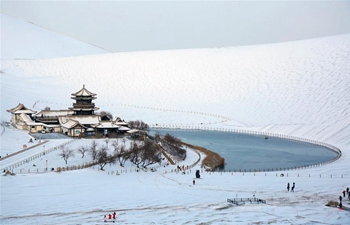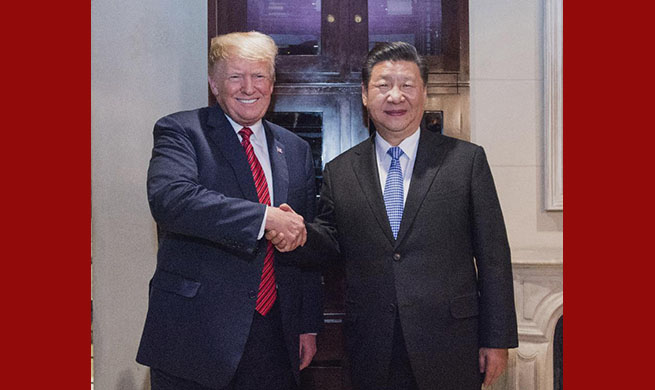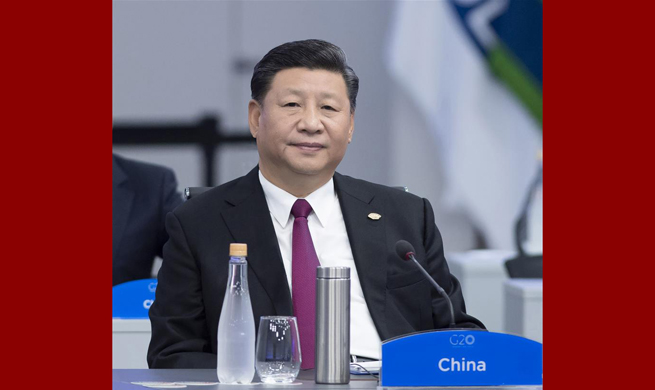EL CALAFATE, Argentina, Dec. 1 (Xinhua) -- "We have made quite a lot of progress," said Victor Belisario, a topographer of the La Barrancosa dam, part of the China-Argentina hydroelectric mega project in the remote southern province of Santa Cruz.
Little more than a year since breaking ground on the Condor Cliff and La Barrancosa dams along the Santa Cruz River, the mega project comprising two sub-projects has gone through several initial construction phases, including excavation, earthwork and filling.
"Workers have prepared concrete and are ready to place the tower cranes needed," Belisario said.
Spearheading the project is engineering and construction giant China Gezhouba Group Company (CGGC), which recently led Xinhua reporters to the two sites, located 65 km apart and some 2,000 km south of Argentina's capital Buenos Aires.
The energy cooperation project, once completed, is expected to generate 4.95 billion kilowatt hours (kwh) of additional power for the South American country, boosting power output by more than 6 percent, according to the CGGC.
The La Barrancosa dam will be equipped with three propeller-style Kaplan turbines able to generate an annual power supply of 1,903 gigawatt hours (gwh), whereas the Condor Cliff dam will feature five Francis turbines capable of producing an average of 3,268 gwh.
The joint project will cut reliance on fossil fuels, "enormously improving Argentina's energy structure," the CGGC said. "Annual savings on imported fuel will reach 1.1 billion U.S. dollars."
As the world's southernmost hydroelectric project and one of the biggest undertaken in Argentina in the past decade, the project is expected to create 5,000 jobs and 15,000 indirect jobs, and drive the socio-economic development in Santa Cruz, Belisario said.
Indeed, this energy cooperation project has helped bring development opportunities to more remote parts of Argentina, said Miriam Dopazo, who works in the Human Resources Department of UTE Represas Patagonia, the Chinese-Argentine consortium in charge of building, operating and maintaining the dams.
Her office has recruited some 200 workers from towns close to the dams and helped provide training for the locals.
"From my first day on the project, I was excited about being able to participate in such an important project for the country and for the province and it has already economically spurred the province and the rest of the nation," Dopazo said.
Similarly, Daniela Ibarra, Dopazo's colleague, said she felt "a great satisfaction" in seeing local employment pick up.
"The area I am in is providing jobs for people," she said.
Federico Lopez, a hygiene and security director in the consortium, described the bilateral cooperation as a "good strategic partnership that serves to develop different large-scale projects ... it's a good contribution that the Chinese government is making."

















